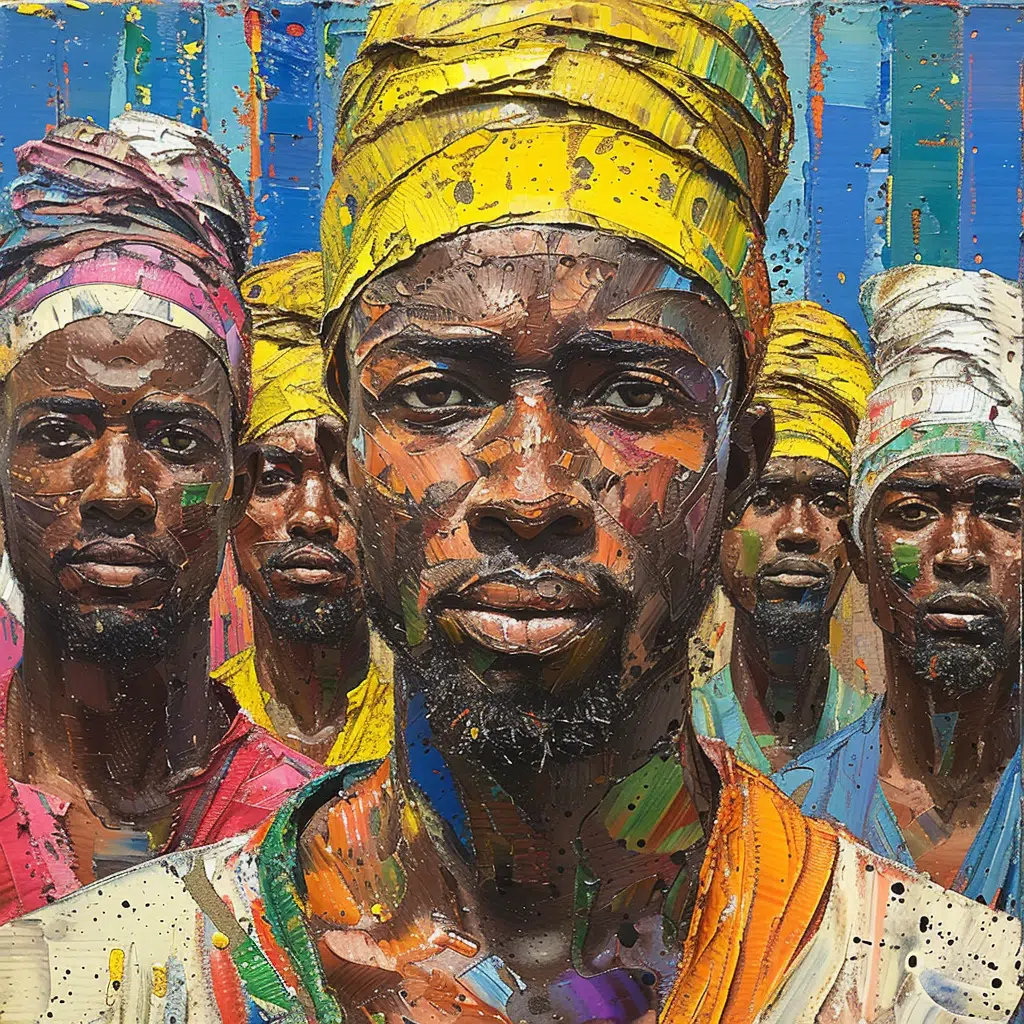Navigating Linguistic Bridges: The Premier English to Farsi Translators of 2024
Within this digital age, language barriers are dissolving at an astonishing pace, and nowhere is this truer than in the bridging of English to Farsi communication. Overflowing with cultural richness, Farsi, also referred to as Persian, is a tongue steeped in history, and as the world becomes more interconnected, the demand for potent English to Farsi translation tools escalates. Enthusiasts of Persian culture and business professionals alike find themselves in need of reliable technology that traverses the linguistic divide. In this article, we’re diving deep into the modern marvels of translation, showcasing platforms that stand as testaments to human ingenuity in the realm of bilingual communication.
Google Translate: The Colossus of Machine Translation
Google Translate towers over the landscape of language translation. Its neural machine translation technology evolves tirelessly, offering English to Farsi translation that steadily grows more accurate. Let’s peel back the curtain to reveal how Google Translate’s sophisticated algorithms and intuitive user interface tackle the subtle intricacies of Persian dialects. Through a meticulous lens, we’ll scrutinize its current effectiveness and its diverse use cases in society today.
Google Translate’s vast vocabulary, now including a stunning 343,466 Persian words, according to recent updates, makes it an invaluable resource. It handles everything from simple greetings to more sophisticated dialogues, ensuring that you’re never lost in translation, whether you’re posting a bid or conversing with a new friend.
| Category | Details |
|---|---|
| Language Name | Farsi / Persian |
| Region | Primarily spoken in Iran, Afghanistan (as Dari), and Tajikistan (as Tajiki) |
| Alternative Name | Persian (More widely used in English) |
| Script | Persian Alphabet (Derived from Arabic) |
| Dialects | Various, including Tehran Persian (standard), Dari (Afghanistan), Tajiki (Tajikistan) |
| Word Count | Approximately 343,466 words in the Persian dictionary |
| Word Formation | Compounding (combination of two words to create a new one) – similar to German and Sanskrit |
| Language Family | Indo-European, Indo-Iranian, Iranian |
| Online Translator | Google Translate (offers fairly accurate translations for simple phrases and sentences) |
| Translation Accuracy | Sufficient for common phrases; human translators recommended for nuanced or complex content |
| Professional Services | Essential for legal, medical, or technical documents, literary works, and when accuracy is critically important |
| Cultural Nuance | Language is deeply rooted in culture and poetry; nuances may be lost without contextual understanding |
| Translation Challenges | Idioms, proverbs, and cultural references can be difficult to translate accurately |
| Learning Resources | Online courses, language learning apps (e.g., Rosetta Stone, Duolingo), textbooks, language exchange programs |
| Alphabet Complexity | Contains characters not found in the English alphabet; cursive script with certain letters having different forms |
DeepL: The Dark Horse with Superior Syntax Intelligence
Sneaking up on the competition, DeepL Translator prides itself on deciphering the delicate dance of linguistic nuances. It’s not just about word-for-word substitution; it’s about capturing the language’s soul. For professionals who demand near-perfect English to Farsi translations, DeepL is a revelation, striving to preserve the poetry inherent within the Farsi language when rendered in English.
Why is DeepL standing out? Because, folks, it understands context, it appreciates syntax, and it delivers translations that read naturally, making it as sought after as the latest rat race cast developments in the world of entertainment.
Microsoft Translator: Integrating Farsi Across Platforms
Enter Microsoft Translator, the versatile tool that brings English to Farsi translation into familiar environments like Word, Excel, and PowerPoint. For those knee-deep in technical documents or jockeying through business discourse, this integration is a game-changer. We’ll delve into how Microsoft has fine-tuned this tool to transcend the ordinary, offering a translation experience that aligns with real-world expectations.
Capturing specialized terms used in diverse industries, Microsoft Translator is a strong ally for those requiring precision. For example, a fitness enthusiast might explore push day Workouts in English but could share the routine in Farsi, with Microsoft Translator ensuring the technical terms are understood.
Papago: A Robust Alternative with Learning Features
Papago, from Naver, is making waves by prioritizing contextual accuracy. This isn’t about mere translation; Papago aims to eliminate misunderstandings that can arise from unfamiliarity with idiomatic expressions. Let’s examine how its English to Farsi translations compare, while simultaneously peering into its language learning toolkit, where users are not just translating but engaging deeply with the language.
This tool is especially helpful for those looking to expand their linguistic abilities in Farsi, offering a hands-on approach akin to diving into the subtleties of a Leelee Sobieski performance.
iTranslate: Bridging Conversations with Voice Recognition
Rising to prominence, iTranslate masters the art of spoken language translation, employing voice recognition to shatter the barriers of communication. We’ll analyze its ability to process spoken English to Farsi and back again, showcasing the advancements in technology that empower real-time conversations between speakers of these languages.
This app doesn’t just repeat phrases; it facilitates full-blown dialogues, allowing users to experience the richness of Persian culture through conversation, opening doors to new connections like the debut of the latest weird al movie streaming on your device.
SayHi Translate: The Mobile Maestro
On-the-go translation is SayHi Translate’s domain. Its straightforward interface and support for a plethora of dialects make it the travel companion par excellence. But how does it fare with regular English to Farsi exchanges? Let’s put SayHi Translate under the microscope as we test its performance in guiding tourists and expatriates alike through the everyday interactions that reveal the essence of Iran’s culture and language.
This mobile maestro is like having a polyglot in your pocket, a real boon for those seeking to immerse themselves in Farsi without getting tangled in linguistic misunderstandings.
Babylon Software: The Veteran Tool with Specialized Lexicons
Babylon Software has been a key player in the translation software market for years. This section spotlights Babylon’s extensive database and lexicons that cater to niche industries. Its English to Farsi translation capabilities are particularly noteworthy for those immersed in specific professional domains where standard translations just won’t cut the mustard.
Whether it’s legal documents or medical research, Babylon steps up, much like finding that perfect English To Creole translator for specialized needs—it’s all about context and industry-specific language.
Harnessing the Power of AI in Language Learning and Translation
The synergy between language learning and artificial intelligence is a marvel to behold. We’ll investigate not only how these tools achieve translation accuracy but also their role in making language learning an immersive experience. From casual learners to linguists, everyone stands to benefit as these translation tools evolve, doubling as environments where one can soak up a new language holistically.
Imagine exploring the streets of Tehran, armed with a tool that not only translates signs and menus but also helps you pick up the language, akin to how an Amharic To English tool can provide cultural insights to an English speaker in Ethiopia.
The Human Element: Can Technology Supplant Professional Translators?
Despite leaps in technology, the question lingers—can machines take over from human translators entirely? Here, we acknowledge the soul of Persian culture and those language flavors that remain elusive to silicon brains. While English to Farsi translation tools have skyrocketed in proficiency, we underscore the irreplaceable value of human touch in translation, especially when conveying cultural subtleties and emotional nuance.
Bridging the Gap: The Sociocultural Impact of English to Farsi Translation Tools
As a bridge between two worlds, English to Farsi translation tools forge new paths of understanding and dialogues unfettered by the confines of language. Reflection is due on how these technologies shape cross-cultural interaction, educational opportunities, and international relations. They transcend mere utility, becoming conduits for shared experiences and fostering a world where every culture can converge, celebrate differences, and form bonds in knowledge and understanding.
In closing, these translation tools are not mere novelties; they are pillars that support the formidable edifice of modern communication. Adaptability and learning are at their core, no less transformative than the ever-evolving world they inhabit. For those peering into the mystery of a new language or culture, tools like these are magic keys unlocking a trove of richness, connection, and endless possibility.
Ingenious English to Farsi Conversion Tricks
Who would’ve thought that bridging the gap between English and Farsi could be as fascinating as a mystery novel? For starters, did you know that Farsi, also known as Persian, boasts a rich literary tapestry with a history stretching back over two millennia? Now, if you’re looking to untangle the intricacies of this ancient tongue, the search for the perfect translation tool might just lead you on an adventure as elaborate as weaving a Persian rug!
Speaking of translation, while English and Farsi might seem as different as chalk and cheese, hop over to a translation tool and you’ll marvel at how quickly “Thank you” becomes “متشکرم” (moteshakeram). Now, suppose you’re in the market for something a bit off the beaten path, like an english To albanian tool. In that case, you’re in luck because there’s a treasure trove of translation wonders waiting to be explored that can flawlessly flip “Thank you” into “Faleminderit”!
Well, say you’ve gotten the hang of switching between English and Farsi and are looking to throw your hat in the ring for some real-time practice. Perhaps a lively exchange or a Post-a-bid auction in Tehran is calling your name? Imagine the exhilaration as you bid on an exquisite piece of Persian art, armed with your newfound linguistic prowess and translated phrases at the ready. Talk about feeling like a fish in water, right?
Now, let’s take a moment to appreciate the beauty of learning a new language. It’s akin to unlocking a secret door to a hidden garden filled with the exotic scents of a different culture. And when you’ve got top-notch English to Farsi tools at your fingertips, well, you’re essentially holding the golden key. So, what’s stopping you from diving headfirst into this linguistic labyrinth and emerging, perhaps, with a Persian poem or two etched in memory? Go on, give it a whirl—after all, a little knowledge goes a long way!
Is Farsi same as Persian?
Yes, Farsi is the same as Persian. It’s simply the Persian word for the language, more commonly used in Iran.
How do you say yes in Iran?
To say yes in Iran, you simply say “baleh” or “are.”
What is the best translation from Farsi to English?
For translations from Farsi to English, Google Translate is a good starting point. It does a decent job with basic sentences and phrases but might miss the mark with more intricate expressions or idiomatic language.
How many Persian words are there?
The Persian dictionary boasts an impressive 343,466 words, rich in history and culture.
What does Joon mean in Farsi?
In Farsi, “joon” is an endearment term that means dear or life. It’s often attached to names to express affection.
Do Persian Jews speak Farsi?
Persian Jews typically speak Farsi, especially those living in Iran or part of Iranian communities around the world.
Do Iranians say Baba?
Yeah, Iranians do say “baba.” It’s an informal way to refer to one’s father or sometimes used to address older men or as an expression of surprise, like “oh my!”
Do Iranians say mashallah?
“Mashallah,” an Arabic phrase that means “God has willed it,” is commonly used by Iranians to express appreciation or to ward off the evil eye.
What does BARF mean in Iran?
In Iran, “barf” simply means snow. It’s completely unrelated to the English word with a less pleasant meaning.
How do you apologize in Persian?
To apologize in Persian, you might say “bakhshid” or “mote’assefam,” which convey that you’re sorry.
Is it worth learning Farsi?
Learning Farsi is definitely worth it if you’re interested in Persian culture, history, or plan to travel or do business in Iran. Plus, it can be a gateway to other Middle Eastern languages and cultures.
Is Farsi a rare language?
Farsi isn’t rare, but it’s not as commonly studied as some other languages. Still, it’s spoken by millions across the world, particularly in Iran, Afghanistan, and Tajikistan.
Is it difficult to learn Farsi?
Learning Farsi can be a challenge for English speakers because of its different writing system and grammar, but it’s not exceptionally difficult compared to other languages. With dedication and practice, you can get the hang of it.
Is Persian a pretty language?
Many folks find Persian quite beautiful, owing to its melodious sound and the rich literary tradition that includes poets like Rumi and Hafez.
What language is closest to Persian?
The closest language to Persian is Dari, which is spoken in Afghanistan, followed closely by Tajik, a variety of Persian used in Tajikistan.
Does Iran speak Persian or Farsi?
The official language of Iran is Persian, also referred to as Farsi, particularly within the country itself.
Why is Persian called Farsi?
Persian is called Farsi in Iran because that’s the native term for the language. Outside of the country, it’s more commonly known as Persian.
Why is it called Persian and not Farsi?
It’s called Persian in English largely due to historical connections and the name’s relation to Persian empires of the past, although “Farsi” has gained more popularity in recent times.
Do Persians speak Arabic or Farsi?
Persians, or Iranians, primarily speak Farsi. Arabic is a significant language in the region, but it’s not the everyday language spoken by the people of Iran.
























